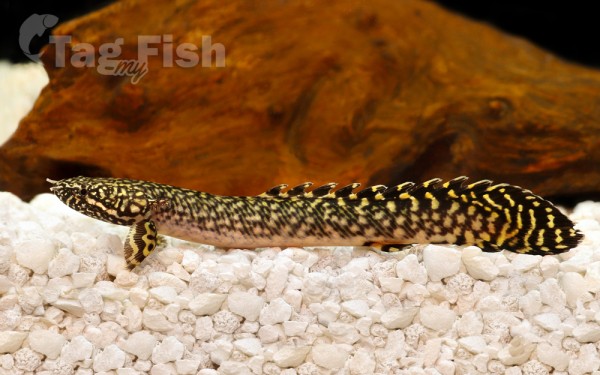Polypteriformes - Bichirs

Classification
Description
Bichirs and the reedfishes comprise Polypteridae, a family of archaic-looking ray-finned fishes and the only family in the order Polypteriformes.
All the species occur in freshwater habitats in tropical Africa and the Nile River system, mainly swampy, shallow floodplains and estuaries.
Anatomy
Polypterids are elongated fish with a unique series of dorsal finlets which vary in number from seven to 18, instead of a single dorsal fin. Each of the dorsal finlets has bifid (double-edged) tips, and are the only fins with spines; the rest of the fins are composed of soft rays.
The body is covered in thick, bonelike, and rhombic (ganoid) scales.
Their jaw structure more closely resembles that of the tetrapods than that of the teleost fishes.
Bichirs have a number of other primitive characteristics, including fleshy pectoral fins superficially similar to those of lobe-finned fishes. They also have a pair of slit-like spiracles on the top of their heads that are used to breathe air, two gular plates, and paired ventral lungs (the left lung shorter than the right). Four pairs of gill arches are present.
Polypterids have a maximum body length ranging from 25 cm (9.8 in) to over 100 cm (39 in) depending on specific species and morphology.
Diet and traits
Polypterids are nocturnal and feed on small vertebrates, crustaceans, and insects.
Polypterids are known to have the extraordinary olfactory ability. The reproduction of Polypterids happens to be in a way that females normally lay eggs, from 100 to 300 in number during a span of days, followed by which males fertilize those.
Air breathing
Polypterids possess paired lungs that connect to the esophagus via a glottis. They are facultative air-breathers, accessing surface air to breathe when the water they inhabit is poorly oxygenated. Their lungs are highly vascularized to facilitate gas exchange. Deoxygenated arterial blood is brought to the lungs by paired pulmonary arteries, which branch from the fourth efferent branchial arteries (artery from the fourth gill arch), and oxygenated blood leaves the lungs in pulmonary veins. Unlike most lungfish and tetrapods, their lungs are smooth sacs instead of alveolated tissue. Polypterids are unique in that they breathe using recoil aspiration. Polypterids appear to prefer breathing air via their spiracles when undisturbed or in extremely shallow waters where they are unable to incline their body enough to breathe air through their mouth.












